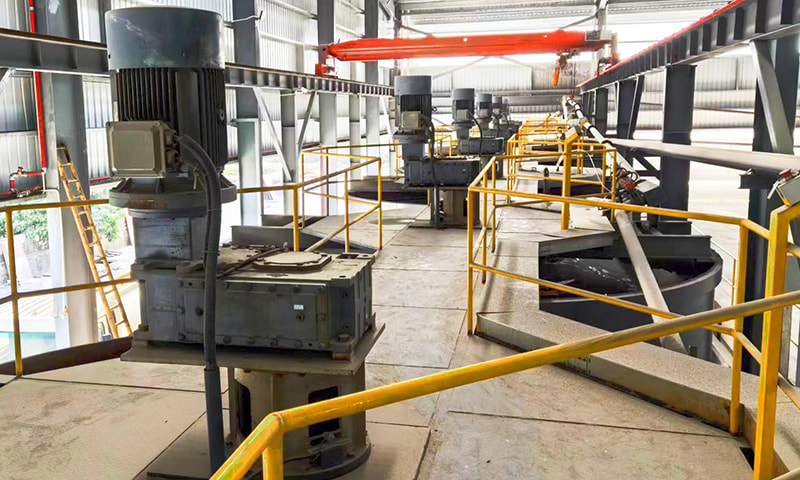In recent years, the construction industry has experienced significant shifts towards more sustainable and efficient building materials. Among these innovations, AAC blocks have emerged as a cornerstone of modern construction due to their lightweight, insulating, and environmentally friendly properties. At the heart of AAC block production lies the AAC block production line, a complex system that integrates raw material handling, mixing, molding, curing, and packaging. AAC block production line factories worldwide are now playing a transformative role, redefining efficiency, energy use, and building standards.
High Efficiency Through Automated Production
One of the critical features of an AAC block production line is its ability to deliver high output while maintaining consistent quality. Automated machinery ensures precision in mixing raw materials, which typically include cement, lime, fly ash, water, and an aerating agent. This uniformity is essential because even minor deviations in the mixture can compromise the structural integrity of the final blocks.
AAC block production line factories are designed to minimize manual intervention. By integrating sensors, automated conveyors, and computerized control systems, these factories achieve a production flow that reduces waste and optimizes resource utilization. Compared to traditional brick-making processes, AAC block production lines can produce larger quantities of blocks in shorter periods, supporting the fast-paced demands of modern construction projects.
Key Components of an AAC Block Production Line
| Component | Function | Benefit |
|---|---|---|
| Raw Material Handling System | Stores and delivers cement, lime, and fly ash | Ensures consistent supply and reduces downtime |
| Mixer | Combines materials uniformly | Improves block quality and consistency |
| Molding Machine | Shapes the aerated mixture into standard block sizes | Reduces manual labor and increases speed |
| Autoclave | Cures blocks under high-pressure steam | Enhances strength and durability |
| Packaging and Stacking System | Prepares blocks for transport | Minimizes damage and simplifies logistics |
Energy Efficiency and Environmental Benefits
AAC block production line factories are also renowned for their energy efficiency. Unlike traditional brick kilns that consume large amounts of fuel, AAC blocks require significantly less energy during curing due to their autoclaving process. The autoclave uses steam under controlled pressure and temperature, which not only strengthens the blocks but also reduces carbon emissions.
Furthermore, AAC blocks themselves are lightweight and insulating. This means that buildings constructed with AAC blocks require less energy for heating and cooling, contributing to long-term sustainability. The combination of energy-efficient production and energy-saving end-use positions AAC block production line factories at the forefront of environmentally responsible construction practices.
Precision Engineering for Consistent Quality
Consistency is a defining feature of AAC block production lines. From raw material batching to final packaging, every stage is closely monitored using digital control systems. Sensors measure material quantities, moisture levels, and curing conditions to ensure that every block meets the required specifications.
This precision engineering reduces the likelihood of defects such as cracks, warping, or uneven dimensions. In turn, builders and architects can rely on AAC blocks for projects that demand uniformity and structural stability. The integration of these control systems within AAC block production line factories demonstrates how technology enhances reliability in construction materials manufacturing.
Benefits of Automated Control in AAC Block Production
| Monitoring Aspect | Purpose | Outcome |
|---|---|---|
| Material Quantity | Ensures correct mixture ratios | Maintains block consistency |
| Moisture Level | Regulates water content | Prevents cracks and shrinkage |
| Curing Pressure & Temperature | Controls autoclave environment | Strengthens blocks efficiently |
| Production Speed | Adjusts machinery pace based on demand | Balances output with quality |
Scalability and Adaptability
AAC block production line factories offer scalability, allowing factories to adjust production volumes according to market demand. Modular design enables the addition or removal of specific production units without halting overall operations. This flexibility is particularly advantageous for regions experiencing rapid urbanization, where construction demands can fluctuate seasonally.
Moreover, modern AAC block production lines are adaptable to different block sizes and densities, catering to diverse construction needs. Whether producing standard wall blocks, load-bearing blocks, or thermal insulation blocks, the same production line can be configured to meet various specifications. This versatility not only improves factory efficiency but also reduces investment in separate production facilities.
Contribution to Modern Construction
The transformation brought by AAC block production line factories extends beyond the factory floor. Builders and developers benefit from reduced construction time due to the blocks’ larger dimensions and lighter weight compared to traditional bricks. Labor costs are also minimized because AAC blocks are easier to handle and install.
Additionally, the uniformity and dimensional accuracy of AAC blocks simplify masonry work, resulting in a cleaner laying process and fewer adjustments during construction. This alignment between production efficiency and construction convenience underscores why AAC block production line factories are instrumental in shaping modern building practices.
Advantages of AAC Blocks in Construction
| Feature | Benefit |
|---|---|
| Lightweight | Easier handling and faster construction |
| Thermal Insulation | Reduces energy consumption in buildings |
| Dimensional Accuracy | Simplifies masonry and improves structural aesthetics |
| Fire Resistance | Enhances building safety |
| Eco-Friendly | Supports sustainable construction practices |
Future Prospects
As urban centers continue to grow, the demand for sustainable, efficient building materials will only increase. AAC block production line factories are well-positioned to meet this demand by combining high efficiency, precise engineering, and energy-saving advantages. Ongoing innovations in automation, monitoring systems, and eco-friendly processes will further enhance the role of AAC blocks in construction.
In addition, integrating digital twin technology and predictive maintenance into AAC block production line factories can optimize operations and reduce downtime. Such advancements ensure that the construction industry can rely on a consistent supply of high-quality AAC blocks to meet both environmental goals and commercial demands.
Conclusion
AAC block production line factories are transforming the construction industry by delivering efficiency, sustainability, and consistent quality. From automated production processes to energy-efficient curing and scalable factory design, these facilities embody modern construction principles.






